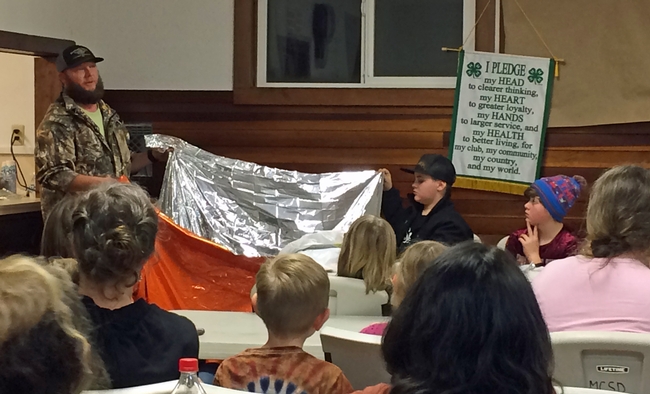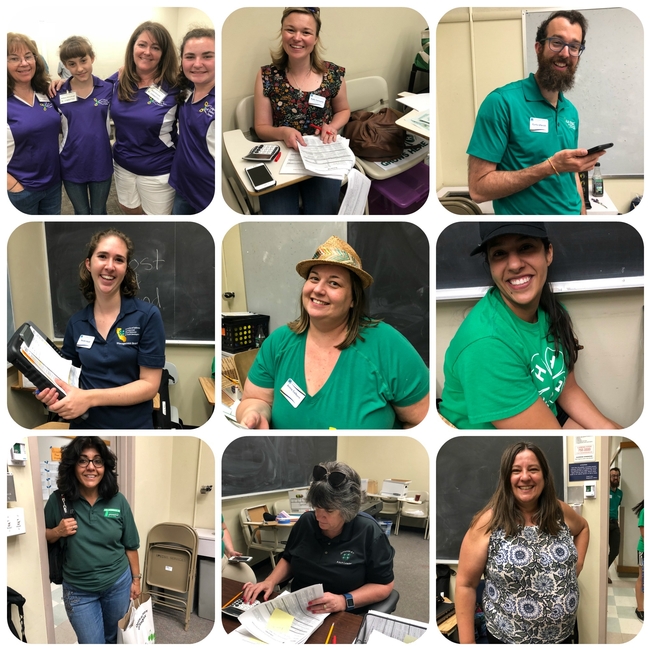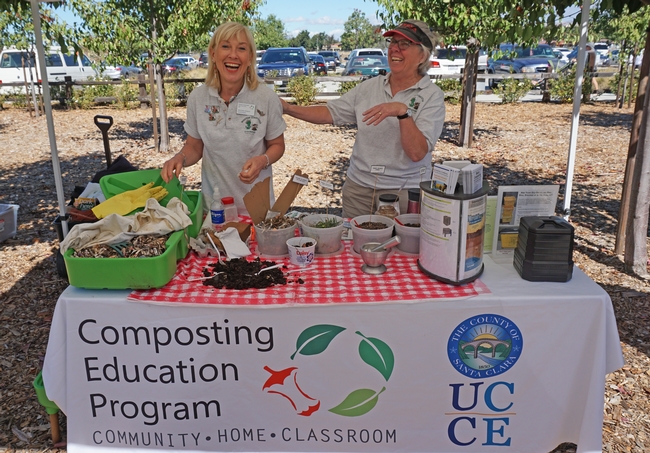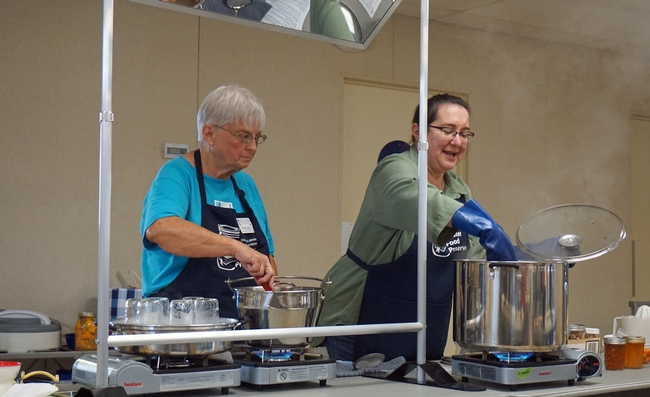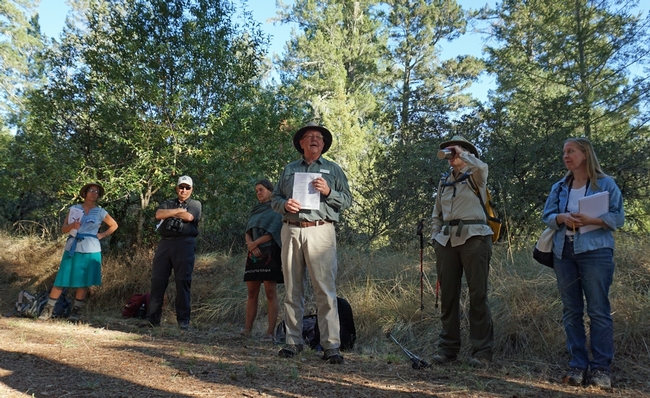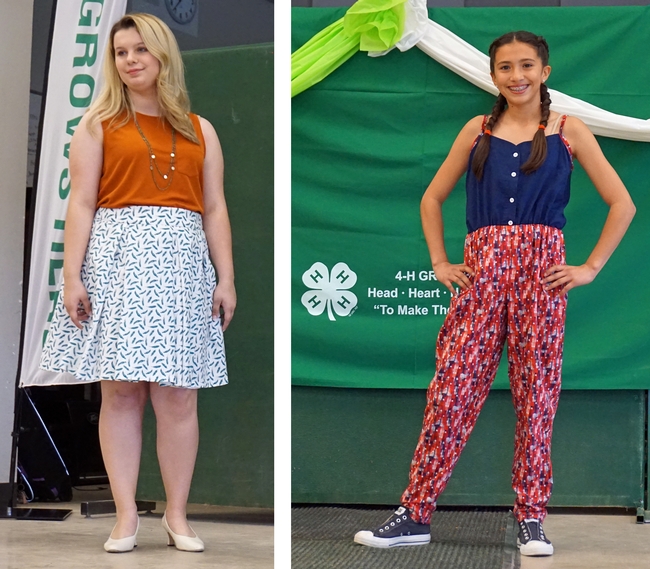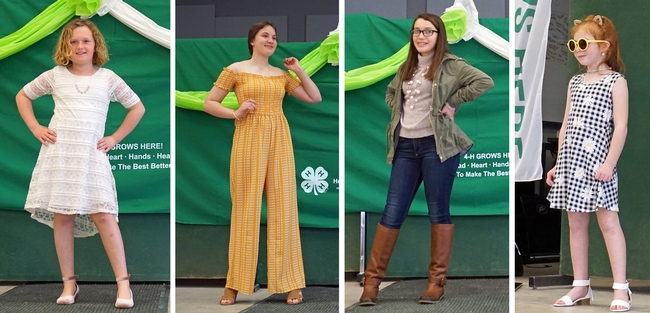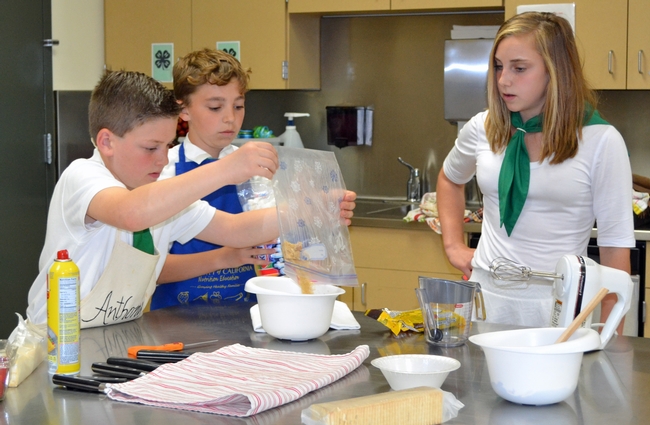- (Focus Area) 4-H
- Author: Ricardo A. Vela
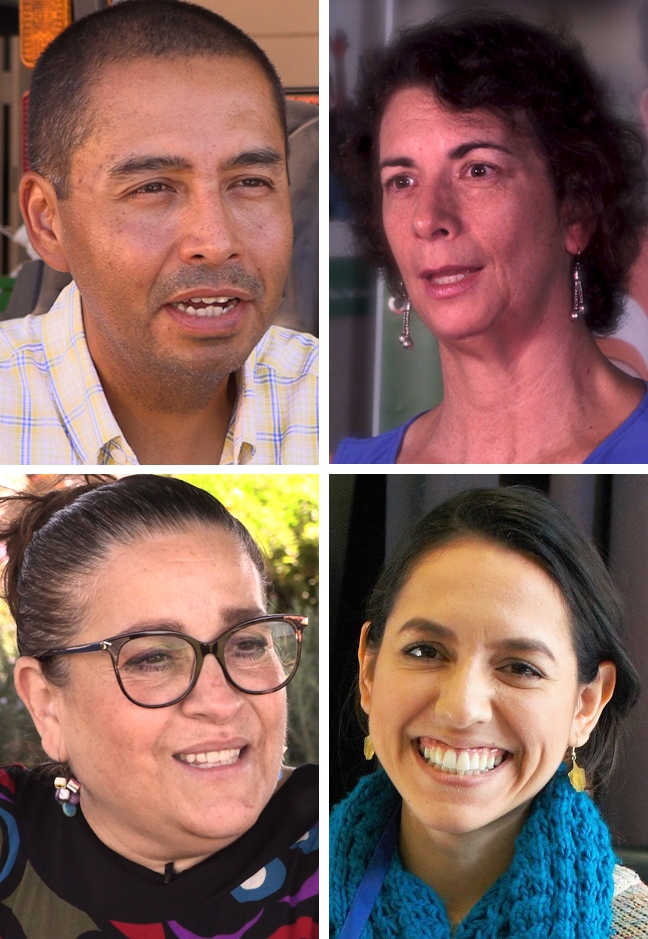
The purpose of Hispanic Heritage Month (September 15–October 15) is to recognize the contributions and vital presence of Hispanic and Latino Americans in the United States. President Lyndon Johnson first approved Hispanic Heritage Week in 1968, and it was expanded to a full month by President Ronald Reagan in 1988.
Why does Hispanic Heritage Month run from mid-September to mid-October? The date was chosen to bookend two milestones for Spanish speaking countries: the celebration of independence from Spain for Mexico, Chile, and, five Central American nations (Guatemala, Honduras, Nicaragua, El Salvador and Costa Rica) and Columbus Day / Día de la Raza. This day is mostly celebrated by the Italian Americans rather than Spanish-speaking immigrants.
In the fabric of our society, the impact of Hispanics is undeniable. It is important for the new generations that our contributions in forging this great nation are valued beyond food and music. From astronauts to physicists, Hispanics have contributed to better our lives. A few examples:
- Luis Walter Alvarez was an American experimental physicist, inventor, and professor who was awarded the Nobel Prize in Physics in 1968.
- Franklin Ramón Chang Díaz is a Costa Rican American mechanical engineer, physicist, former NASA astronaut.
- Ellen O. Ochoa is a Hispanic-American engineer, former astronaut and former Director of the Johnson Space Center.
UC ANR joins in the celebration of Hispanic heritage by profiling four Latino academics, advisors, educators who serve their communities, day after day, applying the UC ANR public values:
- Fe Moncloa - 4-H Youth Development Advisor, UCCE Santa Clara County
- Jairo Diaz - Director of the UC Desert Research and Extension Center
- María de la Fuente – UC Cooperative Extension director in Monterey County and UCCE Farm & Master Gardener Advisor, Monterey & Santa Cruz counties.
- Aileen Carrasco-Trujillo - Bilingual Nutrition Educator, UCCE Santa Clara County
- Author: Jeannette E. Warnert
The joyful reunion of two 4-H children, Leia and Caroline Carrico, with their parents after spending 44 hours lost in the Humboldt County wilderness in early March has raised awareness about the benefits to youth involved in the UC Cooperative Extension 4-H Youth Development Program.
Established more than 100 years ago, UC Cooperative Extension launched 4-H to teach children research-based agriculture and rural living skills. Over time, it has evolved dramatically, reaching children in urban centers, inner cities, suburbs as well as rural communities with leadership opportunities, life skills, nutrition education and other information to help them grow into resilient adults.
The Carrico children, ages 5 and 8, had participated in a 4-H outdoor training training program. They lived in a rural area and were well acquainted with the redwood forest surrounding their home. Recalling lessons they learned, the sisters stayed in place when they realized they were lost – a key survival skill, said Yana Valachovic, director of UC Cooperative Extension in Humboldt and Del Norte counties. There were more things they learned from 4-H project leader Justin Lehnert's teaching that helped them survive unscathed.
“Justin told them to leave signs. Searchers found granola bar wrappers and deep boot marks. They knew that they should shelter in a dry place,” Valachovic said. “They knew to keep positive and how to find safe drinking water without endangering themselves by drinking from a creek.”
The 4-H program in Humboldt County has been inundated with calls for a curriculum that can be used elsewhere to teach these valuable skills. The UC 4-H Youth Development advisor for Humboldt and Del Norte counties, Dorina Espinoza, is working with Lehnert to develop a project sheet so the survival skills used by the Carrico sisters can be made available in 4-H and other settings to young people throughout the U.S.
The sisters' odyssey and its happy conclusion shows the hoped-for result of the research-based 4-H learning model, Espinoza said.
“The sisters are smart girls,” Espinoza said “They attribute their application of survival skills to family camping trips, movies about people who get lost and 4-H adventures. 4-H reinforced new or existing skills. We know kids learn with multiple exposures. 4-H is a hands-on approach to learning that other settings don't offer.”
In 4-H, children choose “projects” they are interested in. The projects are led by adult volunteers from the community.
“What's different about 4-H is we have adult volunteers who develop partnerships with youth. They partner in learning, leadership and decision making,” Espinoza said. “That's a beautiful part of 4-H.”
Lehnert is a 4-H parent and volunteer who operates a business in Humboldt centered on enjoying the outdoors.
“Justin brings years of personal and professional experience, having completed a Wilderness First Responder Course of the National Outdoor Leadership School. He studied outdoor recreation at Feather River College and has been an outdoor recreation enthusiast for years,” Espinoza said. “We are so very grateful to Justin for sharing his expertise with our 4-H community.”
Californians can find UC Cooperative Extension 4-H projects near them at http://4h.ucanr.edu.
- Author: Jeannette E. Warnert
The UC 4-H Youth Development Program, UC Master Gardeners, UC Master Food Preservers and the California Naturalists are parts of UC Agriculture and Natural Resources (UC ANR) that rely on the generous contributions of time and talent by thousands of volunteers.
During National Volunteer Month, UC ANR honors people who help us deliver our research-based information and educational experiences to residents throughout the state.
The UC 4-H Youth Development program has 6,557 youth volunteers and 14,068 adult volunteers.
4-H volunteers serve in many roles, such as club and project leaders, sharing research-based information in the areas of science, technology, engineering, and mathematics; agriculture; healthy living; civic engagement and leadership. Their compassion, skills and knowledge are improving the lives of California youth and preparing them for success in adulthood marked by health and well-being, economic stability and civic engagement.
“We would like to thank our volunteers for their dedication, passion for the program and youth, and most of all for giving their time to help develop the next generation of true leaders,” said Shannon Horrillo, director of the Statewide 4-H Youth Development Program. “Our volunteers are the inspiration our state's youth need to thrive.”
The UC Master Gardener Program has trained 30,983 volunteers and currently has 6,116 active volunteers who serve as agents of change in their communities, connecting people to research-based information and sharing skills to help them grow food, protect the environment and meaningfully connect with nature.
UC Master Gardener volunteers staff telephone and email “hotlines,” where residents can get answers to their gardening questions. Many UC Master Gardener programs around the state manage demonstration gardens that serve as outdoor classrooms for presentations and hands-on workshops. UC Master Gardener volunteers can also be found throughout communities at farmers markets, libraries, and garden centers providing answers to questions about home gardening. These efforts have wide ranging impacts, helping people conserve water, reduce green waste, manage pests safely, grow food abundantly, and more.
“We are so grateful for our volunteers' generosity, commitment and passion to providing the public with information they can use to maintain their gardens that protect and support a healthier environment,” said Missy Gable, UC Master Gardener statewide director.
In 17 counties across California, 400 certified UC Master Food Preservers provide food preservation education to the public, ensuring a safe food supply, increasing food security and reducing food waste.
“Currently, a third of the world's food is wasted. Our Master Food Preserver volunteers make a difference at the household level in reducing food waste,” said Katie Panarella, director UC ANR's nutrition, family and consumer sciences program and policy. “To maintain public safety and avoid foodborne illness, the program teaches techniques for freezing, canning, drying and fermenting food safely.”
The California Naturalist program certifies volunteers to serve as informed stewards of California natural resources, docents of public lands, and citizen scientists gathering data about the natural world and wildlife. After completing 40 hours of training in ecology, geology, wildlife conservation, energy, environmental issues and other topics, most of the certified naturalists serve as volunteers with land conservancies, museums, gardens and organizations that deliver workforce education to young adults at the urban core. See the complete list of partners here. Since its inception in 2010, the program has certified 2,855 Naturalists.
“We have a diversity of groups who partner with UC ANR to offer this training program to their existing, new, or potential volunteers,” said Sabrina Drill, interim director of the California Naturalist Program. “The volunteers share the wonders of California's unique ecology by interpreting at parks and nature centers, and taking part in the study and stewardship of the state's natural resources.”
- Author: Jeannette E. Warnert
4-H has come a long way from its rural roots – now encompassing projects that range from mathematics to mindfulness, robotics to rock climbing. But it's not about to toss out the projects that have built character and confidence in 4-H members since the program's inception more than 100 years ago.
Most people don't sew their own clothing these days, but fashion and textiles are not dying art forms. That was clear at the March 4-H Fashion Review in Fresno County. Dozens of 4-H members modeled their creations, which represented their sewing skills, financial smarts and creativity.
“The Fashion Revue project gives kids the opportunity to gain skills and also to show and compete with their final products,” said Tracy Newton, 4-H Youth Development program representative in Fresno County. “It brings a sense of pride and accomplishment.”
Many 4-H members enjoy traditional sewing projects, in which they showcase sewing skills and the ability to coordinate an outfit. Participants can take on additional challenges, including the “box challenge,” which this year involved sewing one or more garments that contain three colors – red, white and blue – and items in the box, such as buttons, zippers and trim. Other challenges are the “make it mine challenge,” in which the 4-H participants alter a commercial pattern or make their own pattern; and the “retro/historical challenge,” in which the outfits they make are inspired by a pre-2000 design.
Twelve-year-old Atianna Marquez of Fairmont 4-H made a red, white and blue romper with buttons, buttonholes and bias tape from the “box.”
“This romper is special to Atianna because it is the first piece of clothing she has ever made,” Newton said. “She had fun learning how to make button holes, especially learning to cut the fabric with a seam ripper.”
Gabbie Hall of Fairmont 4-H, who has been sewing for three years, wanted a challenge. She selected a skirt pattern with box pleats in order to learn something new. The skirt is fully lined and has deep hidden pockets within the pleats.
“Gabbie complimented the skirt she made with her copper tank top to give her outfit a charming mix,” Newton said. “She plans on wearing this to dinner with her family or to special occasions.”
The most popular challenge at the Fresno County Fashion Revue in March was the consumer science challenge. The participants each put together outfits with the total cost not to exceed $40.
“This part of our fashion review teaches the participants they can be thrifty and stylish,” Newton said. “I like that many of them shop in consignment stores or thrift stores and see value in that. They are learning to appreciate the value of a dollar.”
Ella Hood of Fairmont 4-H started her search for an outfit at the Hinds Hospice Thrift Store. She found a white lace dress in her size for just $4.20. She splurged on a pair of fancy light pink dress shoes for $16.20, and found a necklace and earring set in light pink to complete the look.
“She will wear this proudly to church and dressy events,” Newton said.
Emmalee Balch of Fairmont 4-H modeled a trendy spring outfit she put together for $36.97. Balch purchased a new off-the-shoulder jumpsuit for $14.99 and natural brown high heel sandals for $17.99 at Ross. The outfit came together with a rose gold bangle bracelet and matching stud earrings that cost just $3.99.
Lone Star 4-H member Diana Flores used her great eye for yard sale bargains to put together a designer outfit for under $40. She modeled an Abercrombie and Fitch beige turtleneck paired with light blue Lucky Brand jeans. She completed the look with Lucky Brand riding boots and a pearl necklace with matching earrings to highlight the colors of the shirt.
“She loves wearing this outfit to school because it's within dress code and stylish,” Newton said.
Six-year-old Ashley McCann paired a black and white checkered sundress with white sandals. She accessorized her ensemble with a jeweled cat ear head band, dangle heart earrings, glittery silver choker and, to add a pop of color, lemon yellow sunglasses. The total came in at $33.66.
Following the fashion show, Newton handed out awards. Winners at the county level will have the opportunity to compete in the 2019 State 4-H Fashion Review June 1 in Olson Hall in Davis.
- Author: Suzanne Morikawa
The National 4-H Council has named Elisabeth Watkins of San Joaquin County the winner of the 2019 4-H Youth in Action Award for Healthy Living. She will receive a $5,000 scholarship for higher education and will serve as an advocate and spokesperson for 4-H Healthy Living programming.
The two finalists for agriculture are also from California 4-H: Ashley Jordan of Santa Clara County and Rose Fiorenza of Imperial County.
“These young women represent the essence of true leadership,” said Abbey Tillman of the National 4-H Council. “It's clear that California 4-H is providing great mentorship and guidance to the youth of this great state, and we at National 4-H Council are glad to share their stories nationwide.”
About the Youth in Action Awards
The 4-H Youth in Action Awards began in 2010 to recognize 4-H'ers who have overcome challenges and used the knowledge they gained in 4-H to create a lasting impact in their communities. The awards are given out in four categories, or "pillars": Healthy Living, Civic Engagement, STEM and Agriculture.
Last year, California had seven applicants out of a total of 161 applicants nationwide. For the 2019 awards, we had 19 applicants out of a total of 167 applicants.
Elisabeth will be officially recognized as the 2019 4-H Youth in Action Pillar Winner for Healthy Living at the 10th Annual 4-H Legacy Awards in Washington, D.C. on Tuesday, March 12, 2019. She will be joined by the three other 2019 Youth in Action Pillar Winners: Addy Battel of Michigan (Agriculture Pillar Winner); Clyde Van Dyke of New York (STEM Pillar Winner); and Mason McClintock of Georgia (Civic Engagement Pillar Winner).
To learn more about 4-H Youth in Action and to view the other pillar winners from around the country, please visit: www.4-h.org/youthinaction.
“These young women represent the essence of true leadership.”
Abbey Tillman, National 4-H Council
Elisabeth Watkins, 2019 4-H Youth in Action Winner for Healthy Living

From her earliest 4-H demonstrations, Elisabeth had an interest in educating others about healthy foods and agriculture. “How to Make an Omelet”, her first 4-H presentation, helped her learn to talk and cook at the same time. Over time, her interest in cooking and teaching grew, eventually leading to competing in – and winning – Food Network's Chopped Junior. Now, she routinely appears on local television stations as “Farm Girl Chef," sharing healthy recipes and cooking tips.
In addition to her work as “Farm Girl Chef,” Elisabeth is a dynamic and flexible leader. She volunteered to lead the California State Fair 4-H Cooking Throwdown in 2017. In this role, she coordinated all aspects of the program — encouraging youth to participate, contacting industry professionals to serve as judges, and overseeing all facets of the competition. She also took the initiative to create a similar program in her county, providing youth with opportunities for fun, hands-on learning in developing a healthy lifestyle.
It's not just about helping youth develop cooking skills.
“Working with youth to help them develop the self-confidence to accomplish something great is so fulfilling,” Watkins said.
Elisabeth plans to attend the Ohio State University to pursue a degree in agricultural communications. She hopes to one day host her own farm-to-table show on television, demonstrating how food is harvested, packaged and turned into a healthy meal.
Rose Fiorenza, 2019 Youth in Action finalist for Agriculture
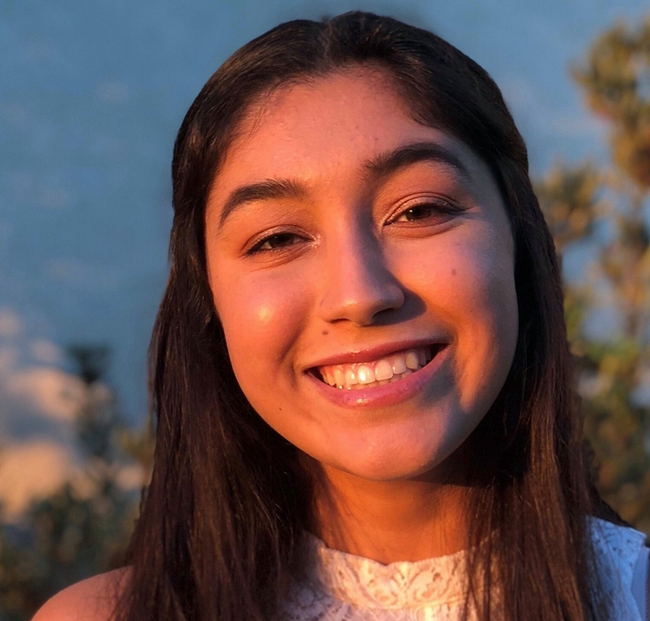
During Rose's four years as a member of the planning committee, she rose through the ranks as the group's secretary, treasurer, president and youth camp director. As Sustainable YOU!'s president and director, she created the Junior Staffer position to encourage junior high 4-H'ers to get involved and learn what it means to be a leader during the crucial middle school years. Rose is currently pursuing a degree in marine biology from the University of California, San Diego, and plans to bring more sustainable practices back to her hometown post-graduation.
Ashley Jordan, 2019 Youth in Action finalist for Agriculture
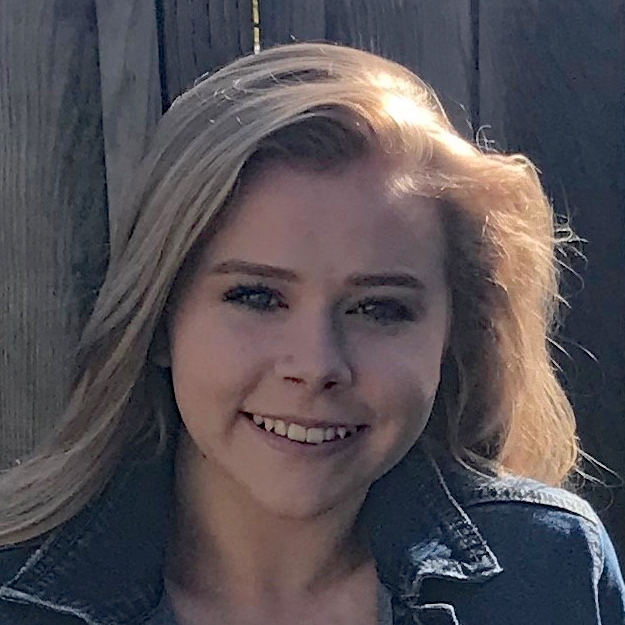
Thus, the Urban Dilemma Project was born. Ashley developed her own curriculum and taught almost 1,000 urban elementary and middle schoolers about where their food comes from. Currently, Ashley is expanding her curriculum to include crop rotation, bees and water management, and she looks forward to training other youth to teach the curriculum at more schools. Asheley plans to attend California Polytechnic State University in San Luis Obispo, double majoring in animal science and ag business to pursue a career educating others about agriculture's influence in our everyday lives.


